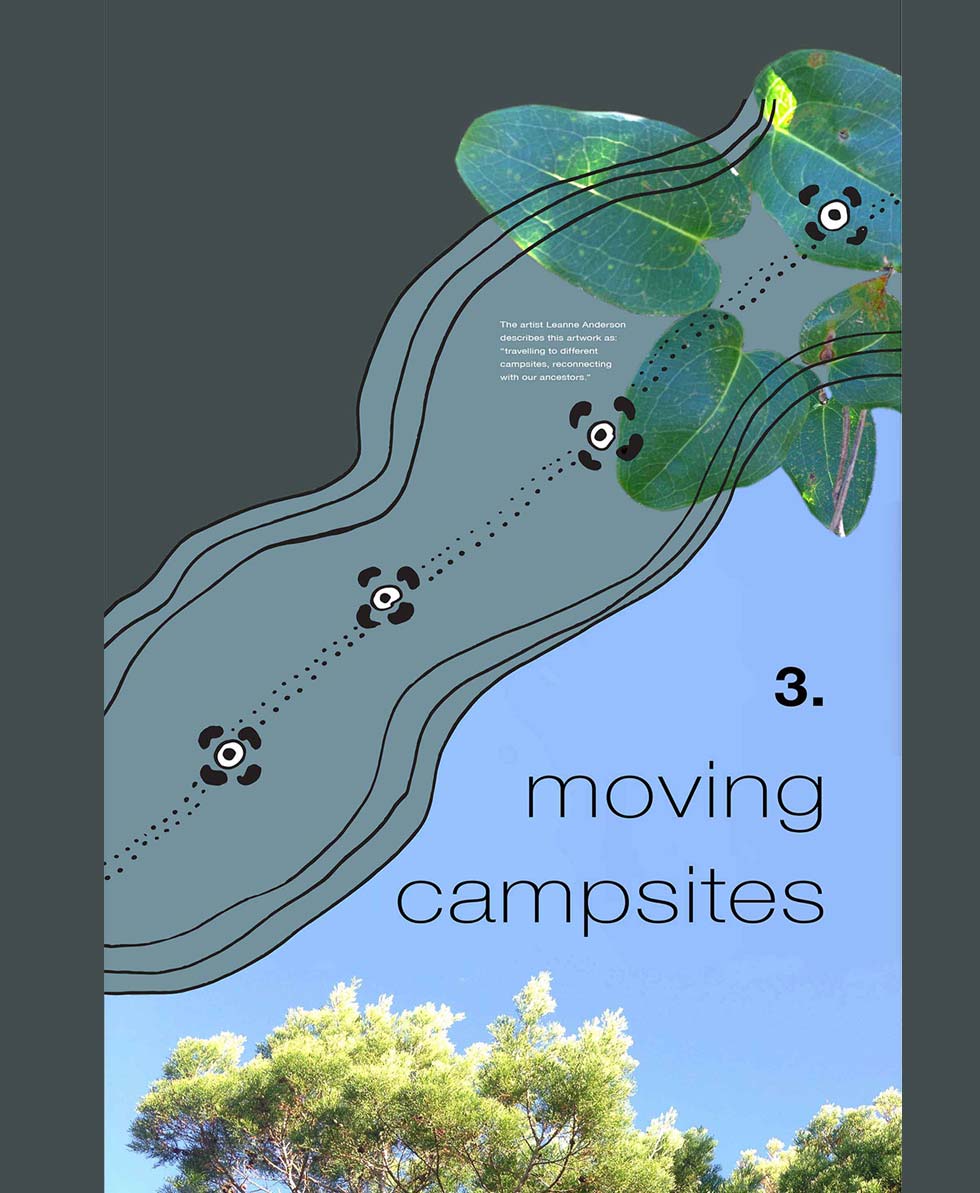Along the Coastal Recreational Path ...

The ease with which Aboriginal people moved between campsites was based on them being able to improvise such shelter as they needed as they went along. The cultural utility of this practice was not appreciated by many early European settlers who selectively used it to argue the idea that the land was uninhabited and hence open for their occupation. Cypress pines along the coast were especially valued as campground markers for a variety of reasons. One of these was that the burning wood repelled mosquitoes!
The stories in the sign
The scroll through section below presents the information contained in the sign on site at this interpretive node.
As well as allowing you to explore this material again, it means that non-English speaking visitors and others not easily able to read the signs can connect with this content via their mobile devices. Adjust your internet browser settings to activate translation and/or text-to-speech options.
Changing campsites
Looking at this 1858 plan of Ballina and the lower Richmond River estuary today, it's easy to expect that Aboriginal people would have been on site here all year round taking advantage of the abundance of resources on offer in and around the beaches and tidal flats.
This however was not the case. Aboriginal people moved around their Country in regular seasonal patterns largely aligned with their management practices and the abundance of resources.
Occasions like the spring oyster harvesting season here on the coast for example provided important chances for groups to gather and share social exchanges including ceremonial corroborees.
In a recording dating back to 1963, Uncle Henry Cook spoke of his memory of a coroboree song relevant to Evans Head.
This archival recording undertaken by John Gordon on Cabbage Tree Island, provides us with a special insight into how traditional Aboriginal culture viewed the seamless way people could merge in and out of their Country, including the ocean.
The role of song in story telling was also central to this small song about camping sung by Uncle Douglas in 1983.
Aboriginal Women's Heritage: Ballina and Cabbage Tree Island
Twelve Aboriginal Women from Cabbage Tree Island and Ballina have told stories about their unique historical experience of Aboriginal women along the lower Richmond River in the publication Aboriginal Women's Heritage: Ballina and Cabbage Tree Island .
All the women have a strong connection to the area and to the people who live there. They describe the support and sense of connection that still unites the Cabbage Tree Island community.
Times may have changed for these women but their memories, love and knowledge will now be passed on for all to appreciate.






